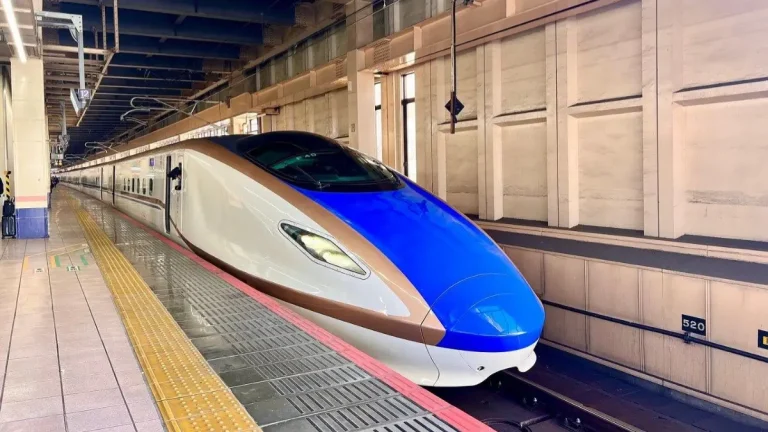South Africans may soon see a major shift in long-distance travel. High-speed train plans between Johannesburg and Durban are back on the national agenda. The Department of Transport (DoT) has announced a bold initiative to modernise regional rail. This plan aims to reduce travel times and boost economic development along key corridors.
Thank you for reading this post, don't forget to subscribe!DoT Invites Private Sector to Shape the Future of Rail
Transport Minister Barbara Creecy has officially launched a Request for Information (RFI) process. This initiative seeks private sector partners who can provide innovative solutions for a new generation of regional trains. The proposed 120 km/h trains will use South Africa’s existing rail network. They will connect major cities including Pretoria, Johannesburg, Polokwane, Musina, Mbombela, and Durban.
Creecy emphasised that the project is about more than speed. “These lines will shorten travel times, reduce travel costs, take pressure off our roads, and stimulate new development in towns along each route. These regional projects are not possible without private sector partnership,” she said.
In addition, the DoT is exploring faster regional lines, with speeds of 160–200 km/h. Ultimately, the plan aims for a high-speed rail line capable of 300 km/h between Johannesburg and Durban.
Timeline and Feasibility
Exact timelines for the high-speed rail project remain uncertain. However, Minister Creecy drew on her experience with the Gautrain as a reference. She explained that it took three years from the RFI process to financial close, and another seven years from financial close to construction.
She stressed that building new railway lines is not immediate. “But if you don’t start, you will never finish,” she added.
Funding estimates are not yet available. This is because the feasibility study has not been completed. Creecy noted that private sector involvement is crucial due to fiscal constraints. Importantly, she clarified that there is no intention to privatise South Africa’s rail network.
Private Sector Participation: Concessions and BOT Models
The DoT expects private investment through concessions or build-operate-transfer (BOT) arrangements. Under these models, private entities operate infrastructure for a defined period. Afterward, the infrastructure reverts to state ownership.
The RFI also covers four additional opportunities for private-sector participation:
- Smart ticketing for seamless travel across trains, buses, and taxis.
- Upgrading PRASA depots for improved reliability and faster maintenance.
- Leveraging PRASA’s fibre optic network for broadband and digital services.
- Modernising rolling stock, including leasing new “Blue trains” and repurposing older yellow trains.
Creecy emphasised that RFIs are not tenders. Instead, they invite the private sector to help design the future of South African rail.
Regional Rail: Economic and Social Impact
Faster regional trains promise major benefits. Commuters will enjoy shorter travel times and safer journeys. Towns along the routes could see more economic activity, new investment, and job creation.
“The goal is to rebuild confidence in public transport, open up investment opportunities, and connect South Africans to the growth we all deserve,” Creecy said.
PRASA’s progress highlights the potential impact. By May 2025, PRASA had commissioned 35 of 40 passenger corridors. This served 77 million passenger journeys annually. The department aims for 600 million journeys a year by 2030. Achieving this target will require substantial private sector investment.
Smart Ticketing: One Account for All Travel
The proposed smart ticketing system will allow commuters to use a single “tap-and-go” account. This works across trains, buses, and taxis. As a result, paper tickets and queues will be eliminated. For the public, travel will become faster and more convenient. For authorities, revenue collection will be transparent and efficient.
Modernising Maintenance Depots
Another RFI focuses on partnering with the private sector to upgrade PRASA depots at Braamfontein and Wolmerton. Improved depots will enable faster train repairs and better service reliability. In addition, local areas will benefit from new jobs and infrastructure investment.
Leveraging PRASA’s Fibre Optic Network
PRASA is rolling out thousands of kilometres of fibre optic cable along railway lines. This is part of its signalling system upgrade. The DoT plans to turn this network into a revenue-generating asset. Private partners could offer broadband and digital services. Additionally, the network will strengthen safety and enable real-time communication across the rail system.
Building a 21st-Century Transport System
Minister Creecy’s vision is clear: create a modern, integrated transport system. This system should strengthen industrial competitiveness, deepen regional integration, and support inclusive growth.
The RFI process is a critical first step. It allows the private sector to help shape the future of rail in South Africa. The RFI portal is open from 26 October to 15 December 2025. Interested parties must register online to access the RFI analysis report. This process will inform future Requests for Proposals (RFPs).
Also check: Major Update on Cape Town’s New Sky Train: What You Need to Know
Progress and Partnerships
The DoT has signed a Memorandum of Agreement with the Development Bank of Southern Africa (DBSA) and National Treasury. DBSA will act as the implementing agent for private sector participation. The PSP unit is being capacitated to manage bid windows and RFP processes.
Earlier, the DoT launched the first phase of online RFIs for Transnet rail and port freight logistics. The process received 162 responses from 52 respondents across 12 countries. The first RFPs for private sector participation in rail are expected before the end of 2025. More rounds are planned for early 2026.
What This Means for South Africans
High-speed and faster regional trains will make travel shorter, safer, and more affordable. Towns along the corridors will benefit from economic development, jobs, and investment. Private sector involvement ensures these improvements without overburdening the fiscus.
This initiative demonstrates a commitment to making rail the backbone of South Africa’s national transport system. It complements freight trucking and taxi services, creating a balanced and modern transport ecosystem.
Read more: New VW Transporter Models Arrive in South Africa – Prices Officially Out
The revival of high-speed train plans from Johannesburg to Durban is more than a transport project. It is a strategic move to reshape regional connectivity, stimulate economic growth, and modernise South Africa’s rail system.
Through private sector participation, innovative solutions, and careful planning, these projects could transform how South Africans move, live, and work. The RFI portal provides industry stakeholders with a unique chance to shape the future of rail in the country.
For citizens, this marks the start of a journey toward a faster, safer, and more efficient regional rail network that benefits everyone.




